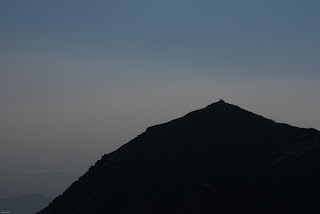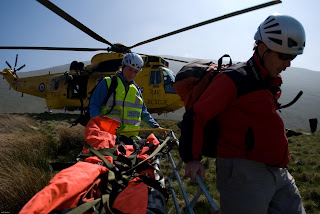
Fontainbleau is more than just woods and rock, it is the synergy of experience and culture so close to home that everyone should make the pilgramage to these hallowed stones. So extensive are the boulders and vast the variety there is quite literally bucket loads of climbing for anyone young, old, beginner or wad to scapper over.
Here we take an off the wall look at the lighter side to climbing in France enchanted forest, with a list of essential hints and tips.
Patisseries: For those not fluent in french, a patisserie translates to shop of filth. These emporiums of edible delights are not usually the natural habitat of the emaciated climber, however a trip to font is also a holiday, so leave your psuedo eating disorder at home and dive in at the deep end of the cake counter.
Pain: NO, not pain, Pain, the french for bread and it comes in many sterotypical forms, like french stick, crossiants and pain au chocolait. It is said that in france a man or woman for that matter can live on bread alone.
Cheese: Armed with bread, cheese and a knife you can live in decadence in the forest and eat like kings. Your only dilemma is which or how many you choose to climb with, the delicate rotten cabbage aroma of a ripe Brie, the suculent toe rot fragance of gorgonzola or for the less adventurous the creamy delights of Edam.
Beer: You can never under estimate the isotonic qualities of beer after a hard days bouldering, despite scientific research that would have you believe beer is a bad for hydration, french beer is special and often requires several litres to reach that perfect hydration level. Do be careful with lunchtime drinking, it can often enhance you neck but decrease actual ability, and lead to some off-piste action.
Wine: Well, when in Rome! The birth place of many fine wines, means that france is a fine place to hone your palate, and cheap as chips for a good bottle as well. A lovely bottle of van rouge to wash down dinner is another hidden cog to success in france.
Gite: A self catering palace and resting place to help any climber get over the aches and pains of a work out in the forest. Much better and usually just as cheap as camping. The only down side is it is far easier to lie in for hours and get a font start.
Hire Cars: The first rule of hire cars is there is no rules, that is providing you take out the collision damage waiver. Failing that try and keep any damage to the underside of the vehicle. If its a large group try and hire similar cars, meaning that impromtu races to the crag can help start the adrenaline pumping. Also of note is the fact that they drive on the other side of the road, well worth remembering when you are half asleep on the morning crossiant run.
Circuits: Often an oxymoron, in the fact that the route taken through the boulders is anything from circuluous. Each is colour graded from white to white, with a few more primary colour in between. Arrows point the direction, numbers the sequence of problems throughout the circuit, a dot often signifies a sneaky boulder to start off. Quite often these paint on symbols have faded to nothing meaning that from time to time you will undoubtably be ‘off-piste’.
Patatas: These are the large spanish potatoes that many of the boulder problems top out on. Often they make a gritstone mantel look like a walk in the park.
Crease: One of the quintesential fontainbleau holds, where a fold in the rock, gives something between a crimp and a jug,.
Pof: Something that the french use to cheat there way up boulder problems, very similar to what violinist place on there bows, but smashed up and located in a pof rag, to give friction to smeary footholds that have become glassy with years of having pof dabbed on them.
Descents: Quite often the hardest part of bouldering at Font is the descents off some of the boulders, especialy for those not happy with launching themselves onto a nearby block. It is often adviseable to check the descent before an ascent, or at least leaving one of the party on the ground to move the crash mat round to a suitable position. Failure to do so can lead to an embarassing situation of waiting for a passing climber to rescue you.
Spotting: Something of a mystical art in the UK, if you observe the french then you will often see textbook examples of how to stop people landing badly. Being british you will of course need trousers or shorts with pockets, into which you must place both hands, and at least an extra three crash pads so that you can sit down a watch in comfort whilst another climber falls off onto the sand. You wouldn’t want to touch another body, we are english after all.
The Font Grading system: Something of a mystery for those not fluent in french, whose alpha-numerical system seems to be different from any other country, where 6a can be harder than 7a, and anything graded below 5 is really just a random number picked out of the air by the author to fill in the spreadsheet of the circuit.
Jumps: Quite often circuits and descents off boulders require short or not so short leaps of faith onto other boulder. This will be disconcerting for the unintiated, however the easiest circuits often include more a step of faith rather than a leap.
Font Start: Often this is believed to be a jumping start from a standing position, it is more often related to the lie in due to the comfort of the Gite and the amount of rehydration that took place the night before.
Climb On: A miracle product for men to come across, although women often choose E45 cream, aloe vera or other Nivea or Ulay hand care products. Whatever your choice these are essential due to the font finger syndrom. Quite often you will see many retrosexual male climbers fighting over a tub of hand cream like women fight over chocolait.
Font Finger Syndrome: This is caused by an allergic reaction between the rock and the fingers. Often accellerate by the unwitting running about like a fat lad in a sweet shop with a fiver. This over climbing on early days can lead to an inability to climb on subsequent days after all the skin on your pads has eaten away by fonticus maximus slopemous. Careful pacing and the use of hand care products is essential.
Chocolait: A famous french film about the evil woman that opens a shop similar to a patisserie but far filthier, and an essential ingredient to any day out in the forest. You will need half a large bar per male, and two bars for every female.
Fonticus maximus slopemous: Similar to patatas but does not include a desperate mantel shelf, instead it is a fight for friction, and skin.
Pacing: Often associated with the amount of isotonic larger or wine consumed throughout your stay in the area, this term is sometimes used as an excuse for when you can’t do a problem with the phrase,’Well, I would have done it eventually, but I have to pace myself’.
Ibuprofen: Another miracle cure for the aches and pains that a workout in fontainbleau will generate. Many climbers load themselves up in the the morning to help combat any off-piste action the night before.
Crash Pad: Also know as the forest sofa, these handy sitting and sunbathing platform are a must for any climber, who hasn’t paced themselves correctly.
Font 7 & 8’s: Whilst at first a guidebook conceived to take honed climbers to the serious end of the font grading system, it is now more commonly seen in the hands of female climbers and dubbed the guide to the best backs in the forest.
off-piste: A common situation in Fontainbleau, as poorly marked circuits and geographical embarrassment result in a Ray Mear’s survival experience to relocate your bags and lunch. It translates to Off Road, which is something only to be done in hire cars.
Bloc: French for Block.




